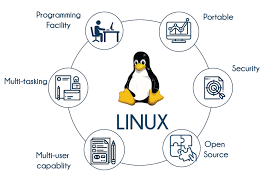Linux Administrator Course for Beginners
The Linux Administrator Course for Beginners teaches the fundamentals of Linux operating systems, including command-line usage, user management, and file permissions. It covers essential topics like software installation, networking, and basic security. This course is ideal for aspiring system administrators and IT professionals starting their Linux journey.

What You Will Learn
Course Curriculum
1. Introduction to Operating Systems: History and Types
2. Understanding Open Source: Philosophy, Licenses, and Benefits
3. Introduction to Linux OS: Distributions, Kernel, and Use Cases
4. UNIX vs Linux: Differences, Similarities, and Evolution
5. Linux Installation: Preparing a System, ISO, and Partitions
6. Linux Boot Process Explained: From Power-On to Shell Prompt
7. BIOS vs UEFI: What's the Difference and Why It Matters
8. Linux Directory Structure Deep Dive: /etc, /bin, /var, and More
9. Core Files in Linux: /etc/fstab, /etc/passwd, /etc/shadow, etc.
10. Linux File System Concepts: EXT4, XFS, Inodes, Mounting
11. Linux Boot Loader: GRUB, GRUB2, Boot Menu, Recovery
12. Understanding Runlevels and systemd Targets
13. Linux Users and Groups: Useradd, Usermod, Permissions
14. Managing Files and Directories: cp, mv, rm, touch, mkdir
15. Process Management: ps, top, kill, nice, jobs, fg/bg
16. Managing Linux Services: systemctl, service, journalctl
17. Package Management: apt, yum, dnf, rpm, snap, flatpak
18. Introduction to Shell Scripting: Variables, Loops, Conditions
19. Network Configuration and Tools: ifconfig, ip, ping, netstat
20. Top 50 Linux Commands Every Admin Should Know
Hands-on Labs & Projects
Project 1: Three-Tier Web Application
Build and deploy a scalable web application using EC2, RDS, and Load Balancer
Project 2: CI/CD Pipeline Setup
Create automated deployment pipeline using CodePipeline and CodeDeploy
Project 3: Serverless Application
Develop serverless solution using Lambda, API Gateway, and DynamoDB
Who Should Enroll?
- Software Developers looking to transition to Cloud
- System Administrators wanting to upskill
- IT Professionals seeking AWS certification
- Fresh graduates interested in Cloud Computing
- Entrepreneurs planning to leverage cloud technologies
